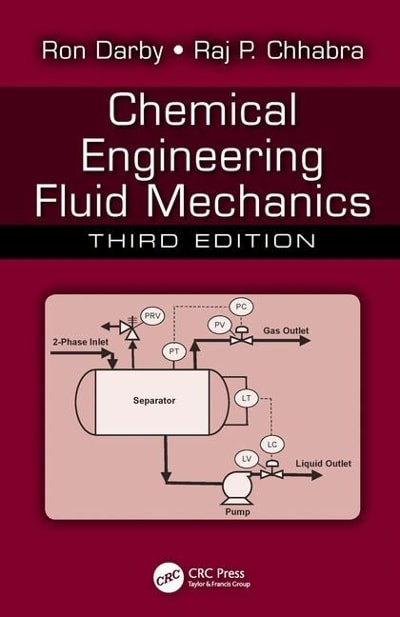A slurry containing $0.2 mathrm{~kg}$ of solids per $mathrm{kg}$ water is filtered through a rotary drum filter,
Question:
A slurry containing $0.2 \mathrm{~kg}$ of solids per $\mathrm{kg}$ water is filtered through a rotary drum filter, operating at a pressure difference of $65 \mathrm{kN} / \mathrm{m}^{2}$. The drum is $0.6 \mathrm{~m}$ in diameter, and $0.6 \mathrm{~m}$ long, rotates once every $350 \mathrm{~s}$, and has $20 %$ of its surface submerged below the slurry.
(a) If the overall average filtrate flow rate is $0.125 \mathrm{~kg} / \mathrm{s}$, the cake is incompressible with a porosity of $50 %$, and the solids $S G=3.0$, determine the maximum thickness of the cake on the drum (you may neglect the filter medium resistance).
(b) The filter breaks down, and you want to replace it with a plate-and-frame filter having the same overall capacity, which operates at a pressure difference of $275 \mathrm{kN} / \mathrm{m}^{2}$. The frames are $10 \mathrm{~cm}$ thick, and the maximum cake thickness at which the filter will still operate properly is $4 \mathrm{~cm}$. It will take $100 \mathrm{~s}$ to disassemble the filter, $100 \mathrm{~s}$ to clean it out, and $100 \mathrm{~s}$ to reassemble it. If the frames are $0.3 \mathrm{~m}$ square, how many frames should the filter contain?
Step by Step Answer:

Chemical Engineering Fluid Mechanics
ISBN: 9781498724432
3rd Edition
Authors: Ron Darby, Raj P Chhabra





